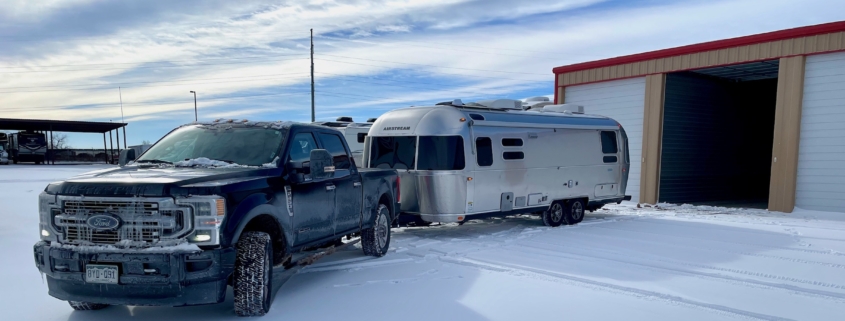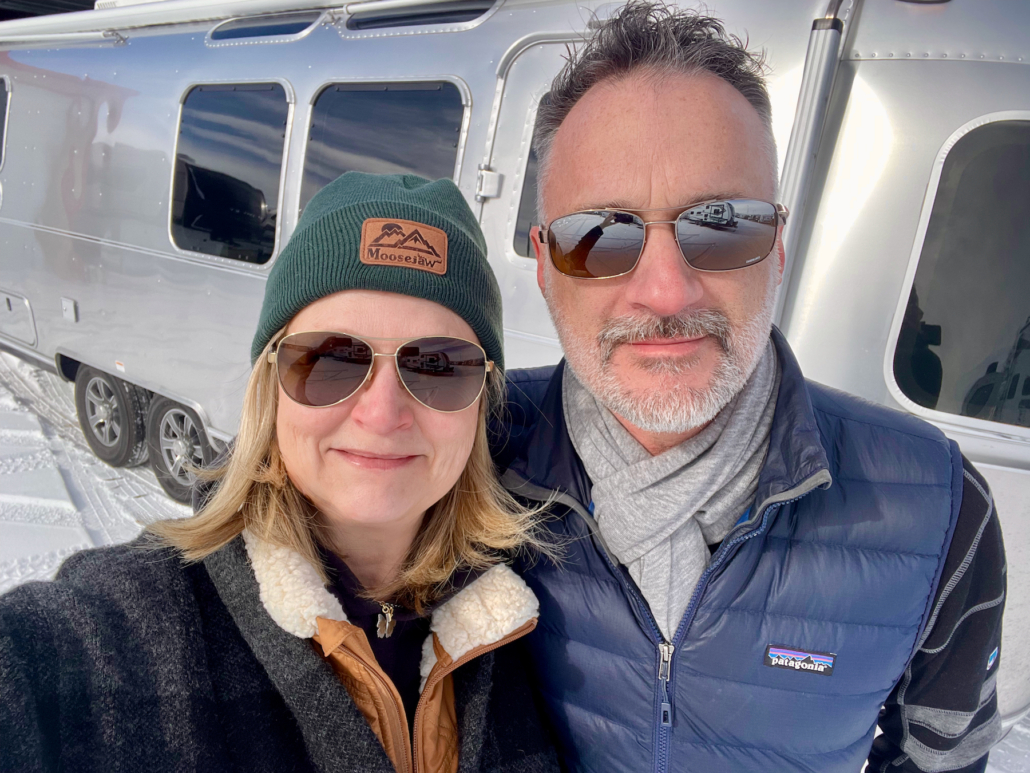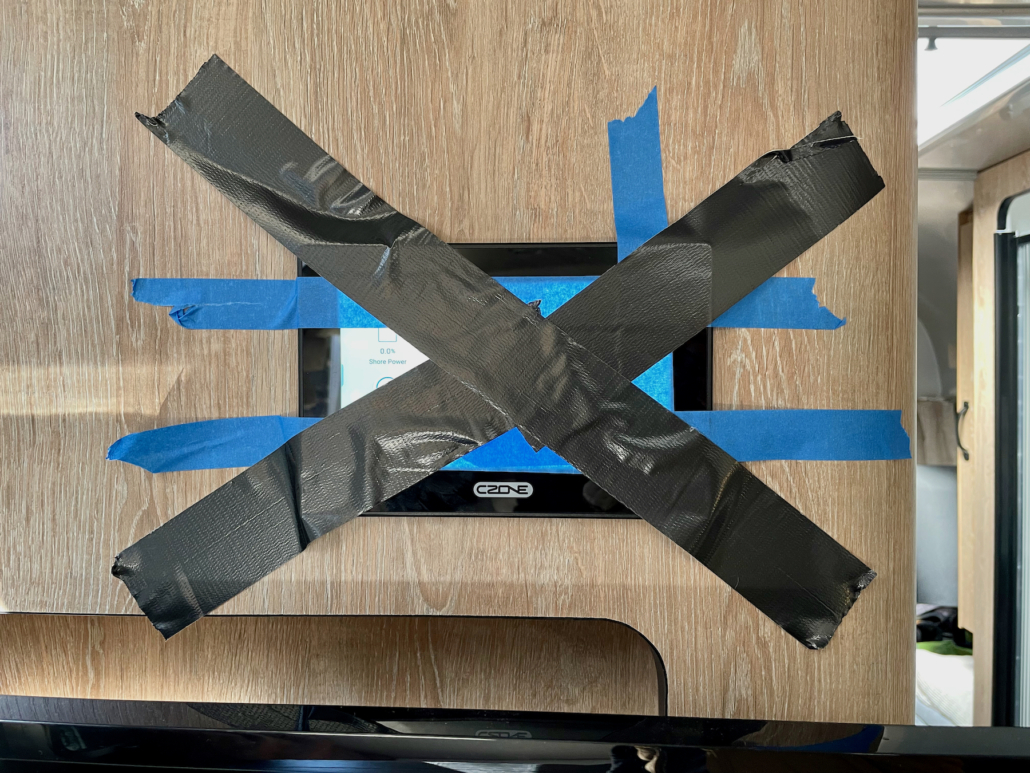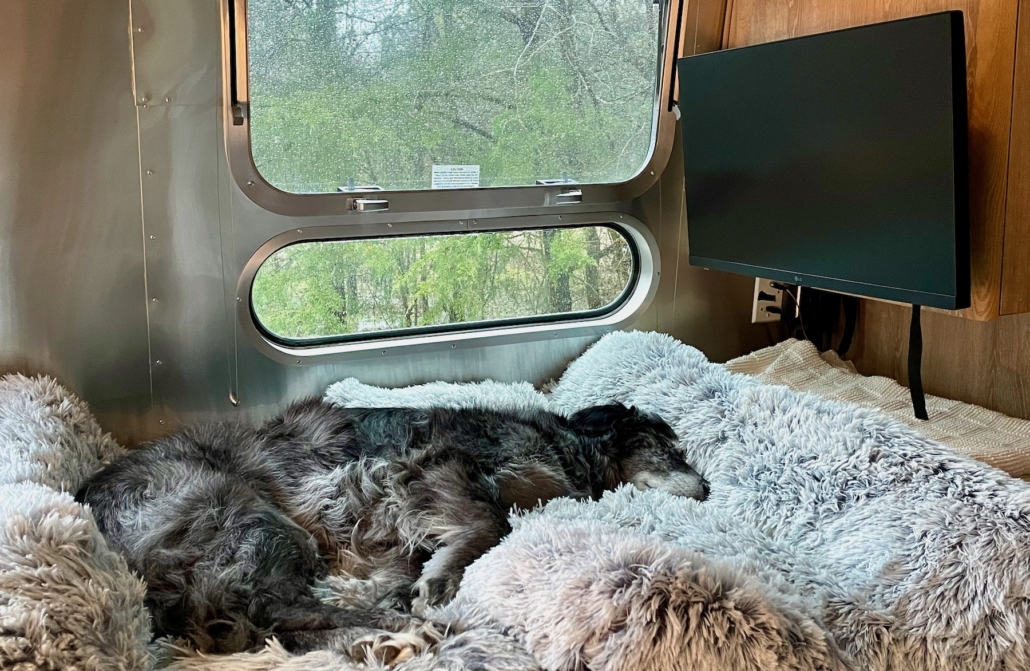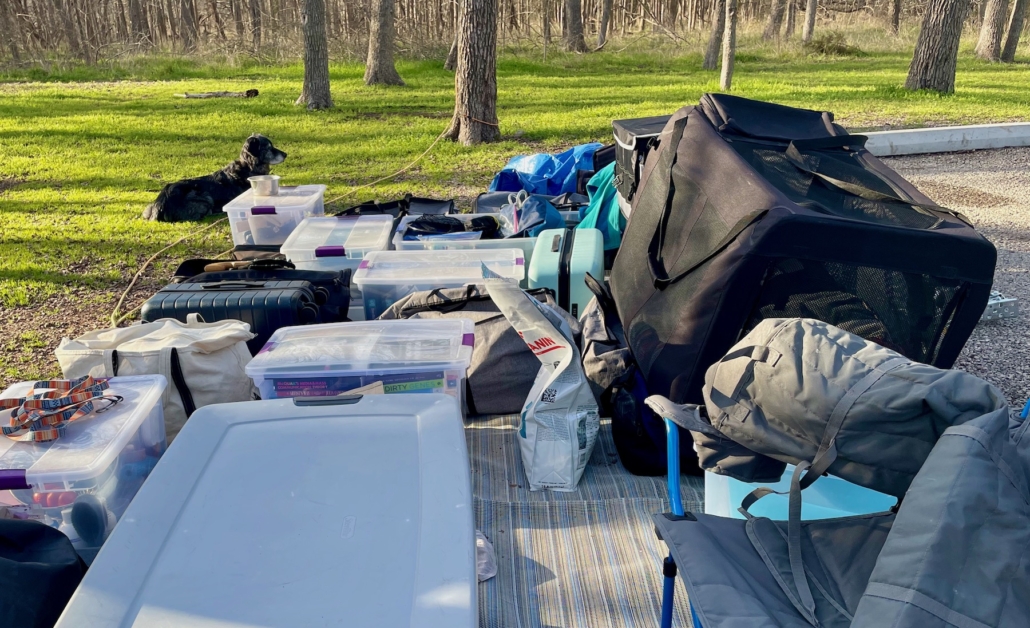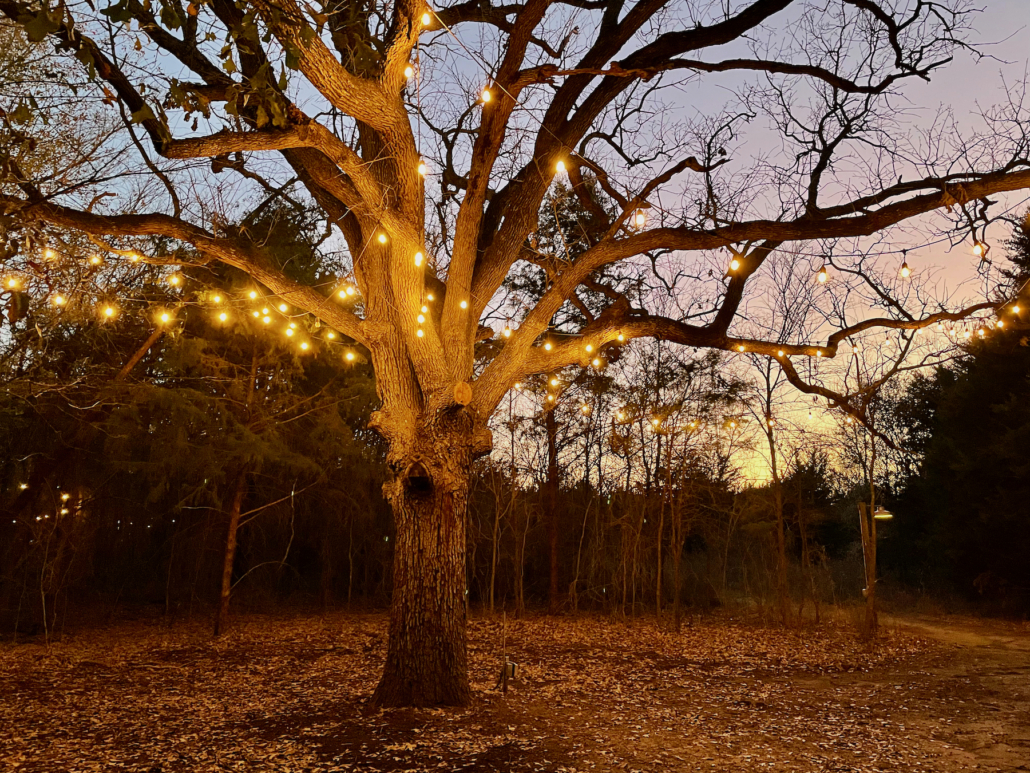Wonder Year 2.0 – Empty Nesting in an RV
A New Era
Several years ago, our family of four traveled the world for two amazing years of education and adventure. Those worldschooling experiences were meaningful and enriching, chock full of learning, togetherness, and memories to savor. Across the years, we’ve tried to bring what we loved from that time into any chance we have to travel together.
Both of our boys are now in college, so my husband Mark and I are freshly-minted empty nesters. This year presents a new window of opportunity for us to hit the road. We both work remotely, and Mark’s recent career change means we don’t have to be rooted anywhere until 2025. We are also planning to relocate away from Colorado, prompting a chance to untether and lighten our load. So, we’ve decided to become full-time RVers again–without the kids this time, except when they visit “home” from far away. We’ll still have our dog Timber with us, though! Now 80 in canine years, he’ll be along for the ride.
This blog is for anyone sorting out how to launch RV travel, whether or not you have kids in tow. We have some experience to rely on and share, and still much to learn along the way, too.
Choosing a Home
Mark and I met in college and bonded over our shared love of travel. We had both spent our childhoods RVing with our grandparents, and long before we could afford an RV of our own, we road-tripped and tent-camped as a couple and later with our two sons. In 2014, we bought our first RV: an Airstream 30’ Flying Cloud. We fell in love with its practicality, flexibility, and style, plus it was the only Airstream with bunks for the kids. Soon after the purchase, we sold our house and cars, donated and stored our belongings, and hit the road for two years to travel across North America as a family.
After settling into a sticks-and-bricks house again in 2016, our teenagers quickly outgrew the Flying Cloud bunks. We sold that trailer (to another family launching full-time travel!) and purchased a different Airstream with a bit more space. We used it for many weekend trips, school holiday vacations, and an amazing 10-week summer journey across the Pacific Northwest. We’ve now swapped rigs again for one with a better layout and features for Mark and me. As we hit the road, we’re re-learning what we need to know about towing, mechanical systems, and DIY repairs.
Airstreams have always suited us given their nimbleness and seamless indoor-outdoor living, but they have some major tradeoffs in terms of living space and storage. Many traveling families we’ve spoken with prefer a larger RV with dedicated bedrooms and more generous living and kitchen spaces. There are so many recreational vehicle options for families, including motorhomes, pop-up campers, fifth-wheelers, toy haulers, travel trailers, and camper vans. Choosing what works best for your family–especially for long-term travel–takes some research. If you are considering RV life, here are a few of our favorite resources to help you learn more.
- How to Choose The Right RV For You: Tips from Experienced Full-Time RVers – starter guidance from an RV club
- Find Your Perfect RV or Camper Based on Your Lifestyle – THOR Industries – insights from one of the largest networks of RV companies
- Find the Right RV for You | Go RVing – a fun tool to get your gears turning
- The Complete Guide to Finding the Right RV… for YOU! – Follow Your Detour – a blog post offering insights from one couple’s experiences and recommendations for choosing your own rig
- 2024 Expert Guide To Choose The Best RV For Full Time Living – The Adventure Detour – another blog, this time zeroing in on choosing an RV for full-time travel
Prepping for Launch
Our idea to live on the road again percolated for a few years before it became a solid plan. Then the plan started with some big decisions–the first was to sell our home and move into a rental. We also began the process of downsizing, both during and after that move.
Next it was time to start chipping away at a lengthy to-do list. Planning to launch in early 2024, we extended our lease and created a multi-month gameplan. The number of things to take care of can seem overwhelming–so much so that we cover them across several chapters in Wonder Year. We had things to close up at home, financials to sort through, healthcare appointments to schedule, an RV to purchase, and a year of travel to sort out. In case it’s helpful as a reference, here’s a copy of the to-do list we were using.
During our Wonder Years, we reserved some popular campsites ahead of time but also booked many sites along the way, stopping when and where our hearts desired. That’s become a lot harder to navigate since COVID, when RV purchases grew dramatically. There are now over a million full-time RV households in the US (about 30% are families), and an estimated 11.2 million households own an RV! That’s a lot of people vying for the best sites, so if you like to book ahead of time, securing preferred spots requires good planning. You’ll need to map out your route, research and select desired locations, target your necessary amenities, choose your desired sites, and then know what dates bookings go live. It takes some legwork, but hopefully you’ll be rewarded with roomy sites and gorgeous views.
Some of our favorite RV travel planning tools include:
- RV LIFE Pro – extensive site that includes amenity details and customer reviews with links for booking
- Allstays – shares campsites across the US and Canada; note the app is better than the website
- Hipcamp – listings of private RV spots and campsites, often in interesting locations with unique amenities
- Campground Views – offers detailed photos of many campsites to help you choose your favorites
- Google Earth – another fun way to check out parks, campgrounds, and local attractions before you go
If you are more of a go-with-the-flow traveler and don’t want to be beholden to reservations, boondocking (also known as dispersed camping) may be more your speed. Getting off the grid often yields more privacy and even better views, but without utility hookups. Dispersed camping requires a different kind of planning (including what you’ll do for power, water, and sewage) but can be fantastically liberating and easier on the environment. Check out the Bureau of Land Management, The Dyrt, and Boondocking.org to learn more.
On the Road
Launch date: January 13, 2024. Which became the 14th, the 15th, then the 16th, then the 17th and 18th…throwing our best-laid plans into immediate disarray. An ice storm and sub-zero temps kept us in Colorado, waiting it out at The Residence Inn. And the early bumps continued–during our first two months on the road, we encountered heavy rains, tornado warnings, endless mud, a frozen water line, nonexistent internet service, and thickets of off-season mosquitoes. Plus we realized that, despite having carefully packed the RV, we didn’t need about a quarter of what we’d brought along.
But bumps and problem-solving and detours are all part of the journey. As we navigated them, we were also sorting out the time and space needed for work, teaching university classes, and future travel planning. That felt a bit familiar, too: the first few months of our Wonder Year had been much the same, but with twice the people. There’s always a learning curve and things to work out when embarking on a long-term trip.
Mark and I invented a funny-not-so-funny game: “Is THIS the day we turn the corner?” Finally, we did, in New Orleans in March. We also decided to slow down our travel, canceling some stops to stay longer in other locations. It’s all gotten easier and we’re finally in a groove of better-balanced calendars, responsibilities, adventures, and rest. Here are a few tips from Wonder Year we’ve been using and would recommend to fellow travelers.
- Stay flexible and leave space for mishaps and unexpected events. Create contingency plans in case things get really rough. Also, have insurance for the big stuff, like something happening to your RV.
- Slow down if needed, and don’t hesitate to change your itinerary if another plan will work better–it’s ok to relax your own expectations. Know cancellation policies for your bookings to help avoid penalties.
- Schedule downtime in your travels. You aren’t on vacation trying to jam-pack experiences into a week–you are living your whole life on the road. You’ll need some quieter, rest-filled days, too.
- Tap into networks to help with problem-solving. We belong to Airstream Addicts, an online group of over 80K members who can help answer almost any question about living in, maintaining, and repairing a trailer. Similar groups exist for other RV brands, plus there are social media travel groups, in-person clubs, and knowledgeable camp owners and hosts who might be able to help.
- In addition to reaching out for resources, build social connections as you travel. Join a traveling club, meet other campers for dinner, say hello to the people parked next to you, head into town to find new friends, and visit loved ones along your path. It all helps fill your tank when you don’t have roots.
Looking Ahead
We at Wonder Year are passionate about long-term travel and worldschooling–it’s an exciting evolution in how we collectively think about family life and educating our kids. Mark and I are grateful for having worldschooled and hope to bring a similar mindset to traveling as empty-nesters. We want to explore whatever this new phase holds for us and are looking forward to having time to learn and reflect while being away from the busyness of rooted life.
We also believe that everything you do at “home” can be done when your home is an RV. Our biggest lesson has been that living simply aligns well with our values of freedom, curiosity, and gratitude. Learning and exploring alongside the people we love is a gift, curiosity fuels us and keeps us open-minded and young at heart, and the novelty of traveling seems to slow down time–all of which matter more and more the older we get.
Is there anything you hope to bring back into focus as you travel? How else do you value your time on the road?

